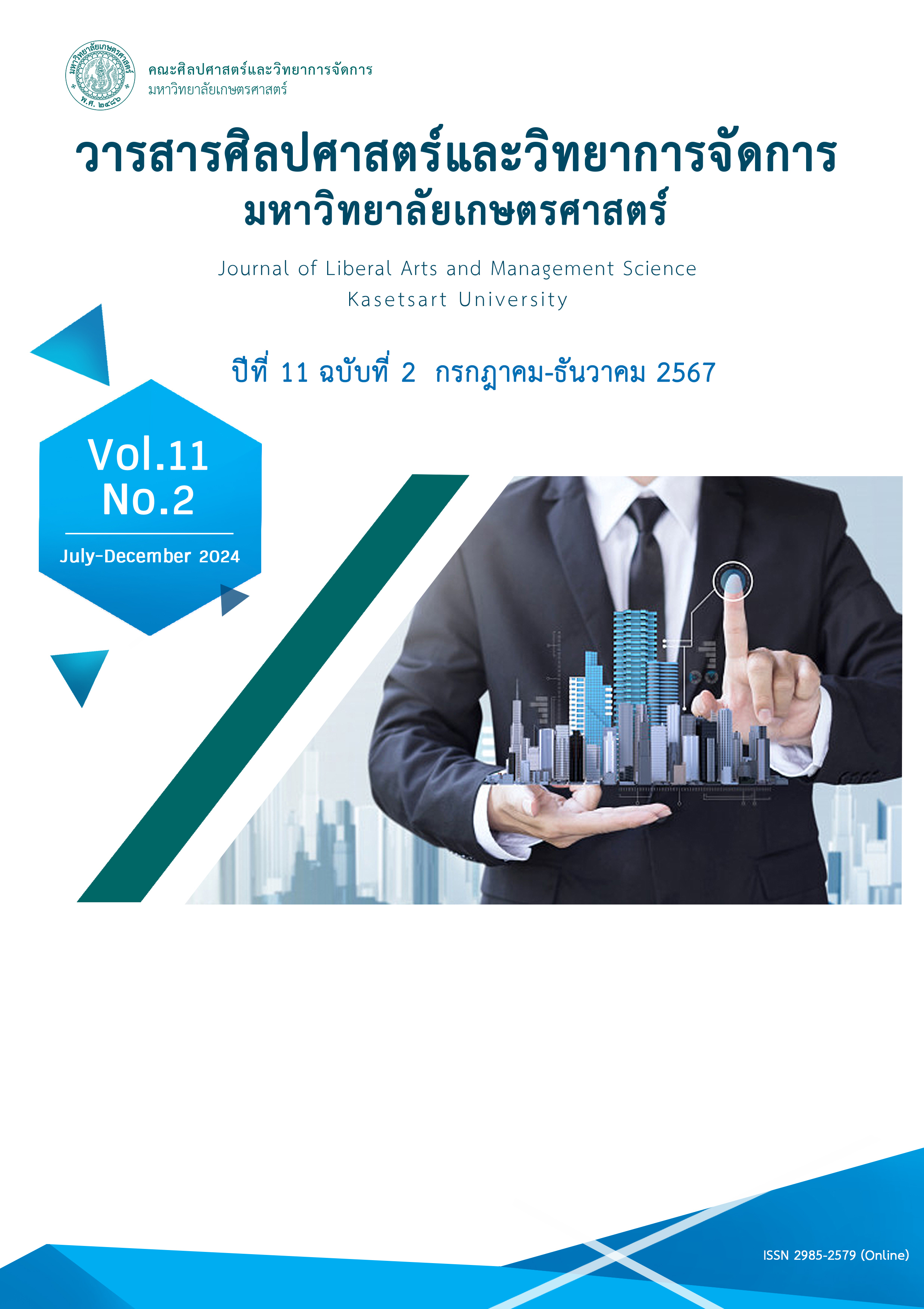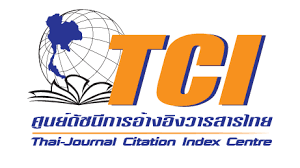การวิเคราะห์ปัจจัยทางเศรษฐกิจและสังคมที่ส่งผลต่อพฤติกรรมการสูบบุหรี่ของคนไทย
คำสำคัญ:
พฤติกรรมการสูบบุหรี่ , ความถี่ในการสูบบุหรี่, คนไทยบทคัดย่อ
งานวิจัยนี้ศึกษาถึงลักษณะทางประชากร ปัจจัยที่มีผลต่อการตัดสินใจในการสูบบุหรี่ และ พฤติกรรมที่มีผลต่อความถี่ในการสูบบุหรี่ของคนไทย เพื่อหาแนวทางในการกำหนดนโยบายเพื่อลดการสูบบุหรี่ กลุ่มตัวอย่างคือประชากรอายุ 15 ปีขึ้นไป จำนวน 92,014 ตัวอย่าง วิเคราะห์ข้อมูลด้วยแบบจำลอง Binomial logit Model และ Ordered Logit Model โดยใช้วิธีประมาณค่า Maximum Likelihood ผลการศึกษาพบว่า รายได้และการศึกษามีความสัมพันธ์เชิงลบต่อการสูบบุหรี่ ในขณะที่อายุมีความสัมพันธ์เชิงบวก ผู้ที่อาศัยในเขตเมืองสูบบุหรี่น้อยกว่าผู้ที่อยู่ในชนบท และประชากรในภาคกลาง ภาคเหนือ และภาคตะวันออกเฉียงเหนือสูบบุหรี่น้อยกว่าภาคใต้ เพศชายมีแนวโน้มสูบบุหรี่และมีความถี่ในการสูบบุหรี่มากกว่าเพศหญิง ผู้ที่หย่าร้าง หม้าย หรือแยกกันอยู่สูบบุหรี่มากกว่าผู้ที่แต่งงานแล้ว นอกจากนี้ การดื่มสุรามีความสัมพันธ์กับการสูบบุหรี่และความถี่ในการสูบบุหรี่ที่เพิ่มขึ้น ดังนั้นนโยบายลดผู้สูบบุหรี่ควรมุ่งเน้นการเข้าถึงพื้นที่ชนบทเนื่องจากมีอัตราการสูบบุหรี่สูง โดยจัดตั้งศูนย์บำบัดและให้ความรู้เรื่องโทษของบุหรี่ ควรมีการบังคับใช้กฎหมายอย่างเคร่งครัดเพื่อลดการนำเข้าบุหรี่ผิดกฎหมาย ด้านสังคมควรส่งเสริมความเข้มแข็งของสถาบันครอบครัวเพื่อลดปัญหาการหย่าร้างซึ่งเป็นหนึ่งในปัจจัยกระตุ้นการสูบบุหรี่ ด้านประชากรควรมุ่งเป้าการให้ความรู้แก่เพศชายซึ่งมีแนวโน้มสูบบุหรี่มากกว่าเพศหญิงเพื่อสร้างค่านิยมลดการสูบบุหรี่
References
กฤษรัตน์ ศรีสว่าง. (2559). ผลของนโยบายควบคุมบริโภคยาสูบด้วยการเพิ่มภาษี. สืบค้นเมื่อ 15 กันยายน 2567, จาก https://www.bangkokbiznews.com/columnist/111877
กันต์ธีร์ นุชสุวรรณ, นรินทร กลันทกพันธุ์, และ ยุทธภูมิ จารุเศร์นี. (2553). โครงการศึกษาเรื่องผลของการเปลี่ยนแปลงมาตรการภาษีและไม่ใช่ภาษีต่อพฤติกรรมการบริโภคยาสูบของประเทศไทย. สืบค้นเมื่อ 15 กันยายน 2567, จาก https://www.trc.or.th/trcresearch/index6.php
มณฑา เก่งการพานิช, ธราดล เก่งการพานิช, กรกนก ลัธธนันท์, ศรัณญา เบญจกุล, และ หทัยชนก พรรคเจริญ. (2556). ปัจจัยที่สัมพันธ์กับพฤติกรรมการสูบบุหรี่หลีกเลี่ยงภาษีในภาคใต้ของไทย. วารสารวิจัยสุขภาพเเละการพยาบาล, 29(1), 82-95. https://he01.tci-thaijo.org/index.php/bcnbangkok/article/view/28929
ศักรินทร์ นนพจน์. (2560). ผลกระทบของอัตราภาษีบุหรี่ต่อสวัสดิการทางเศรษฐกิจของประเทศไทย. สืบค้นเมื่อ 16 กันยายน 2567), จาก https://resourcecenter.thaihealth.or.th/content/358-media-ผลกระทบของอัตราภาษีบุหรี่ต่อสวัสดิการทางเศรษฐกิจของประเทศไทย
ศิริวรรณ พิทยรังสฤษฏ์, ปานทิพย์ โชติเบญจมาภรณ์, และ ปวีณา ปั้นกระจ่าง. (2559). สถานการณ์การควบคุมการบริโภคยาสูบของประเทศไทย พ.ศ. 2559. สืบค้นเมื่อ 10 กันยายน 2567, จาก https://www.trc.or.th/th/media/attachments/2562/01/29/2559.pdf
สำนักงานกองทุนสนับสนุนการสร้างเสริมสุขภาพ. (2558). เดินหน้ารณรงค์ลดการสูบบุหรี่. สืบค้นเมื่อ 10 กันยายน 2567, จาก https://www.thaihealth.or.th/เดินหน้ารณรงค์ลดการสูบ/
Bader, P., Boisclair, D., & Ferrence, R. (2011). Effects of tobacco taxation and pricing on smoking behavior in high risk populations: a knowledge synthesis. International journal of environmental research and public health, 8(11), 4118-4139. https://doi.org/10.3390/ijerph8114118
Black, K. (2006). Business Statistics: For Contemporary Decision Making (4th ed.). New York: John Wiley and Son.
Cho, A., Chan, G., & Gartner, C. (2023). Motivations to change smoking behaviors between 2007 and 2019 in Australia: a repeated cross-sectional study. Nicotine and Tobacco Research, 25(4), 674-681. https://doi.org/10.1093/ntr/ntac176
Cobb, L. K., McAdams-DeMarco, M. A., Huxley, R. R., Woodward, M., Koton, S., Coresh, J., & Anderson, C. A. (2014). The association of spousal smoking status with the ability to quit smoking: the atherosclerosis risk in communities study. American journal of epidemiology, 179(10), 1182-1187. https://doi.org/10.1093/aje/kwu041
Farrelly, M. C., Nonnemaker, J. M., & Watson, K. A. (2012). The consequences of high cigarette excise taxes for low-income smokers. PLOS ONE, 7(9), e43838. https://doi.org/10.1371/journal.pone.0043838
Kleykamp, B. A., & Heishman, S. (2011). The older smoker. JAMA, 306(8), 874–875. https://doi.org/10.1001/jama.2011.1221
Kong, F., Chen, H., & Cheng, Y. (2023). Social interaction, survival stress and smoking behavior of migrant workers in China: An empirical analysis using CHARLS data from 2013–2018. Behavioral Sciences, 13(8), 680. https://doi.org/10.3390/bs13080680
Połtyn-Zaradna, K., Basiak, A., Zatońska, K., Wołyniec, M., Dąbrowska, D., Szuba, A., & Zatoński, W. (2016). Prevalence of tobacco smoking among participants of PURE Poland study. Journal of Health Inequalities, 2(2), 142-147. https://doi.org/10.5114/JHI.2016.65354
Spaulding, A., Eldridge, G., Chico, C. E., Morisseau, N., Drobeniuc, A., Fils-Aime, R., ... & Dolan, K. (2018). Smoking in correctional settings worldwide: Prevalence, bans, and interventions. Epidemiologic Reviews, 40(1), 82–95. https://doi.org/10.1093/epirev/mxy005
Wang, R., Li, B., Jiang, Y., Guan, Y., Wang, G., & Zhao, G. (2019). Smoking cessation mutually facilitates alcohol drinking cessation among tobacco and alcohol co-users: A cross-sectional study in a rural area of Shanghai, China. Tobacco Induced Diseases, 17, 85. https://doi.org/10.18332/tid/114076
Zhu, B., Giovino, G., Mowery, P., & Eriksen, M. P. (1996). The relationship between cigarette smoking and education revisited: Implications for categorizing persons' educational status. American Journal of Public Health, 86(11), 1582–1589. https://doi.org/10.2105/AJPH.86.11.1582





